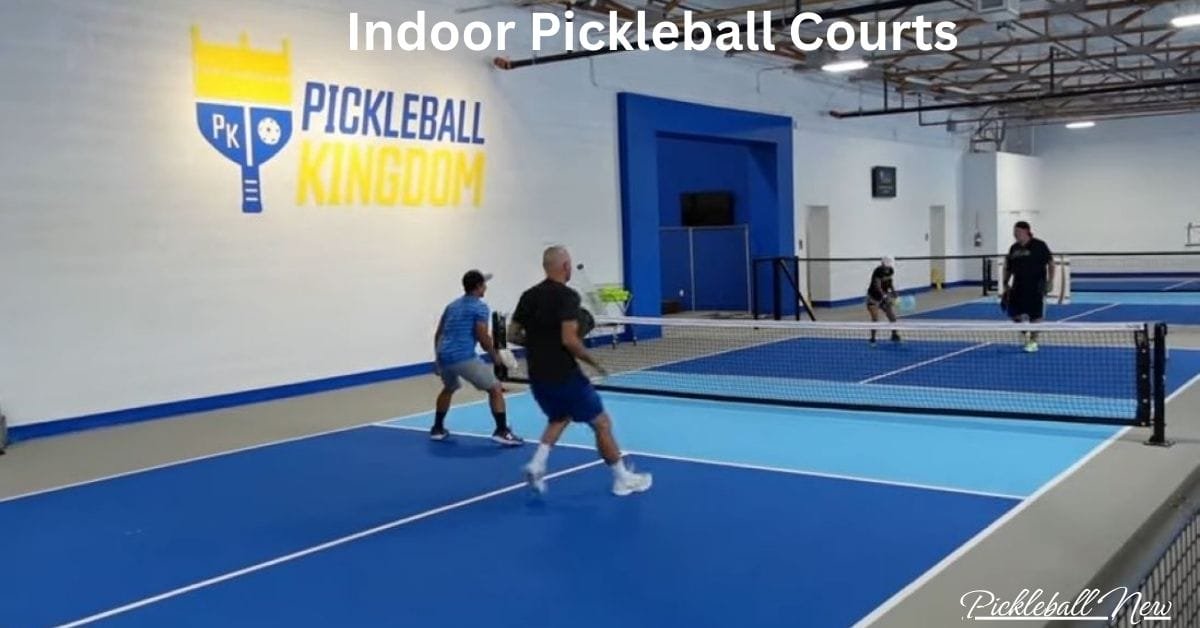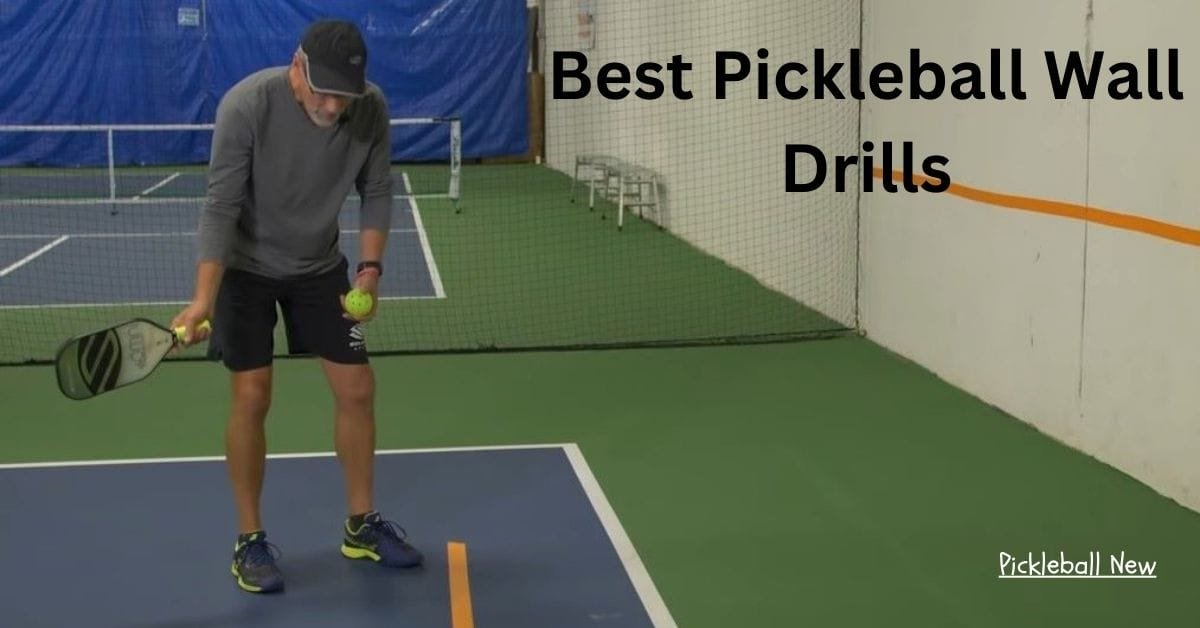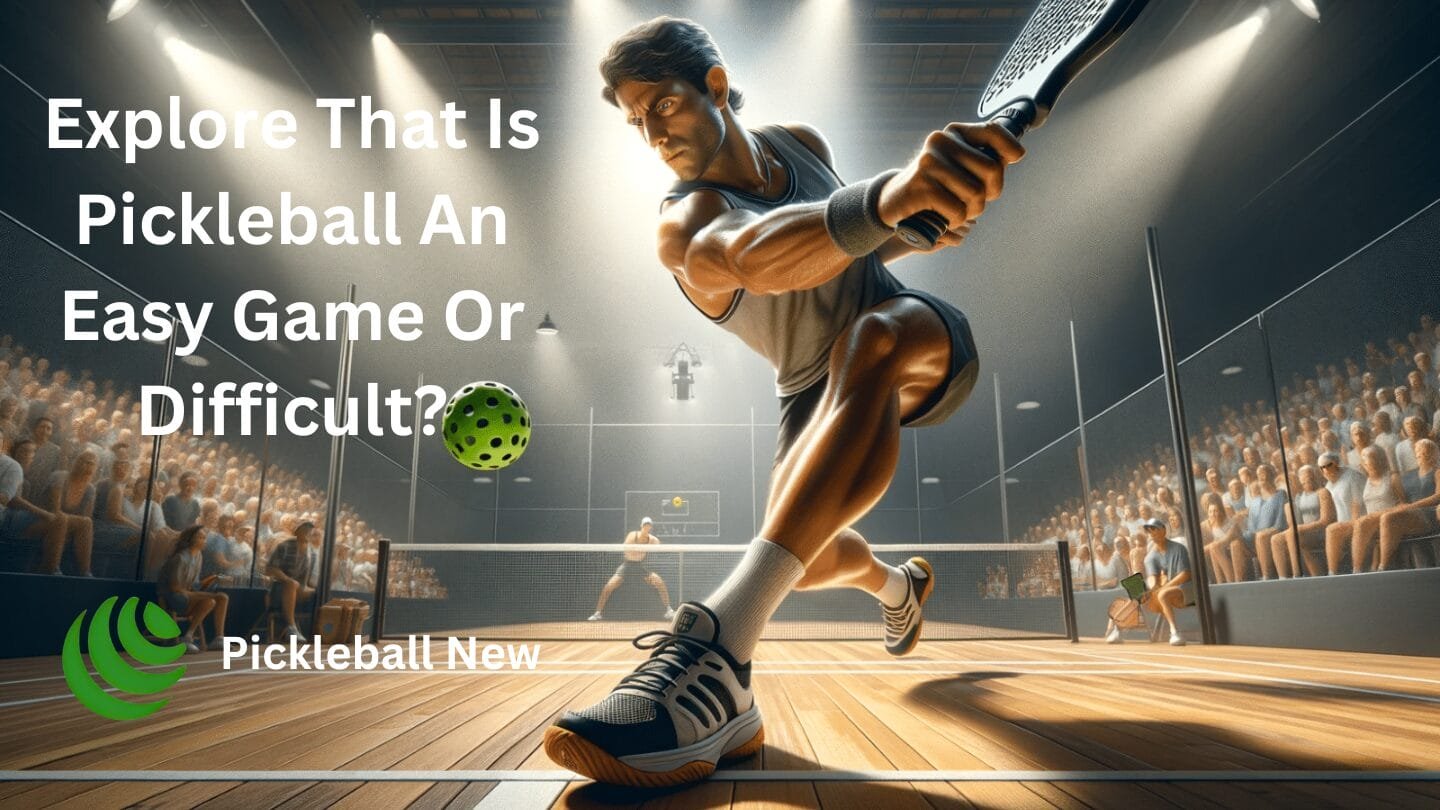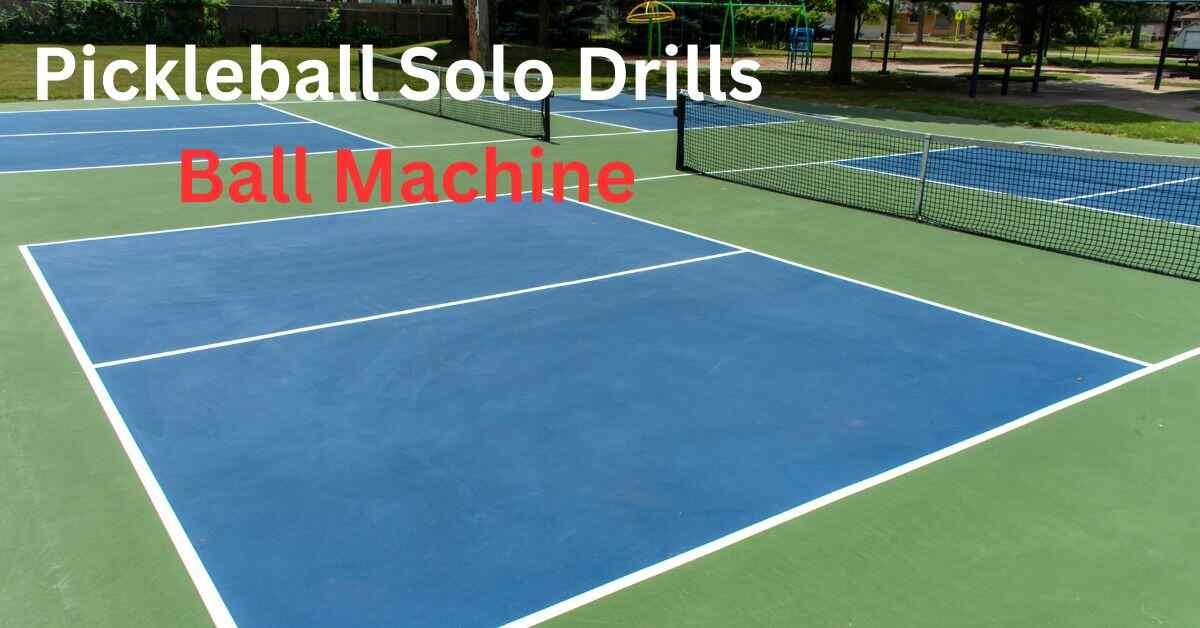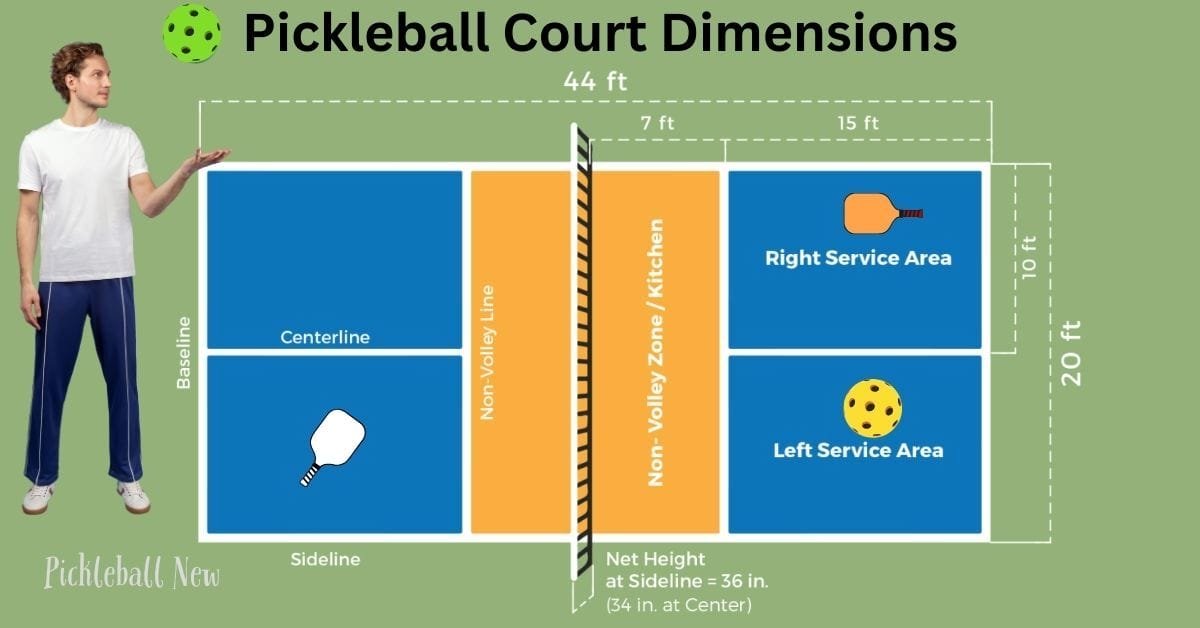How Big Is the Pickleball Court? All the Guides and Differences?
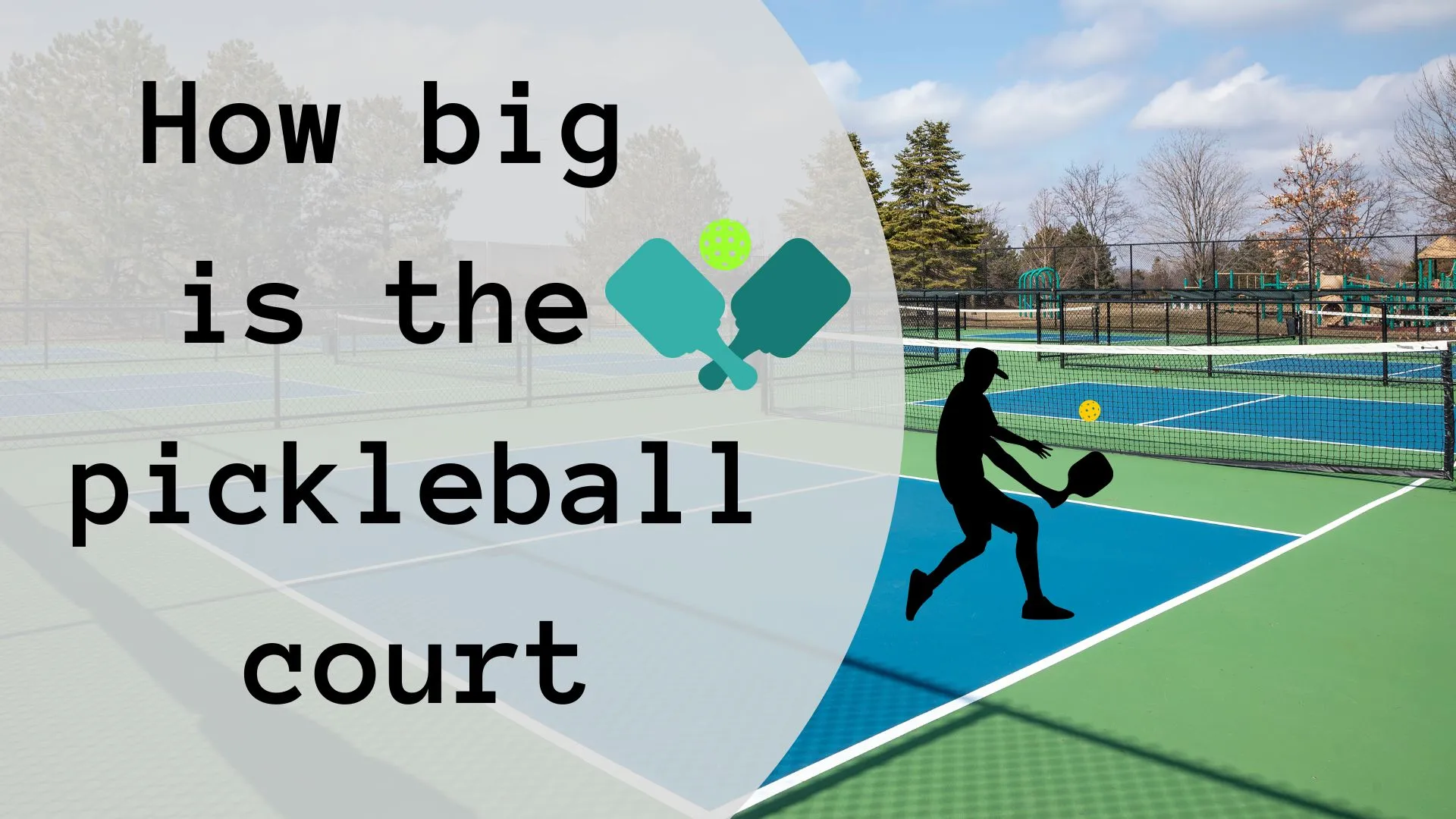
“Pickleball” is becoming increasingly popular in every part of the world, as shown by the number of courts. It’s opening up, from small gardens to big stadiums, everywhere you see courts. However, how much space do you need to build the court?
The most miniature pickleball court is 20 feet wide by 44 feet long. The medium playing surface provided by USA Pickleball is 33 feet wide by 60 feet long, which adds four corners off the rooms to all sides of the court.
You may be constructing a pickleball court at your home, school, stadium, playground, in a city club, or for older adults. If my thinking is true, it’s essential. Do you know what materials are used to build a court? We have significant experience using materials to construct the pickleball court.
Whether you’re ready to roll up your sleeves and DIY your court or are just interested in this topic, all these instructions will cover you from start to finish. We explain its basics to you very politely.
The actual size of a pickleball court
Let me jot down some lines for you, aligning with the heading while ensuring they’re in a conversational tone:
- Let’s get real about pickleball court dimensions!
- Unveiling the True Size of a Pickleball Court.
- Exploring Authentic Measurements of a Pickleball Court.
- Diving into the Actual Size of a Pickleball Court.
- Getting Down to the Nitty-Gritty: Pickleball Court Dimensions Revealed.
- Peeling Back the Layers: What’s the Real Deal with Pickleball Court Sizes?
- Breaking it Down: The True Dimensions of a Pickleball Court.
- Cutting through the Noise: Authentic Pickleball Court Dimensions Unveiled.
- Size Matters: Understanding the Genuine Dimensions of a Pickleball Court.
- Let’s Set the Record Straight: Uncovering the Real Size of a Pickleball Court.
Playing this game alone the player can practice
You can play it on the driveway; it is more exciting and enjoyable for people, but the requirement is that your driveway has a flat surface, making people more interested in your game because people who can watch it will enjoy it more. You can build a court of the proper dimensions for doubles or singles play.
It suits families; everyone can enjoy it, regardless of age. This game is available for people of all ages, like children, older adults, and young kids. This fantastic game benefits you because it can maintain your physical health. It keeps your body fit and maintained.
Lines on a Pickleball Court
Different lines show the different areas of pickleball courts where the game is played. These lines can be drawn using tape, chalk, painted, or other temporary lines. For quick lines, tape is typically used.
The important sections
Sidelines
The baseline is situated at the end of the court. It was running parallel to the net. When someone playing this game stands behind this line by serving the ball, you stand behind this line; otherwise, you can’t serve the ball because it is against the rules of the game.
Beginnings
In the world of pickleball court, its journey started with joy and friendship. This is the place where friendships are grown, new memories are created, and talent is increased. The first serve shows the player’s excitement to win the match against their competitor and become champions of the game.
Centerline
In the pickleball court, the centerline is divided into two equal parts. This line is separate for every team service. It works as a boundary while playing the match. The centre line also helps with the detection of serve and volley exchange.
Non-Volleyball Lines
These lines on both sides of the court are seven feet away from the net and run perpendicular to it. All pickleball lines need to be two inches wide and white. Pickleball lines should all be white and two inches wide to aid with the player’s sight. Players will find it easier to see and determine whether the ball is in or out.
More info about it
In pickleball, all the lines must be painted white and are two inches wide. This makes it easier for players to see if the ball is in or out. The lines also show where players aren’t allowed to hit the ball right after it bounces – those are the non-volley lines. One key line in this area is the kitchen line, sometimes called the dining area. Behind this part of the court, it’s split into four service courts.
The centerline divides the two service courts on each side of the court. So, pickleball sets boundaries, like designating areas for cooking and serving and ensuring everyone plays pretty.
Pickleball court vs. tennis court
Suppose you think about the size of the pickleball court. The tennis court size is a good idea because its features resemble a pickleball court. So, the pickleball easily fits the court of Tennius, but you remember that it includes only one condition: the Tennis court size is 60 feet; otherwise, it does not work on it. It is easy for players to play the game, and they can also use its out area.
Products on the court surface
1: Concrete:
A concrete outdoor court surface is a top choice for pickleball due to its great value and stability. It excels in both these aspects.
2: Asphalt:
Although asphalt courts can be more expensive upfront, they may require additional maintenance compared to other options like concrete.
3: Snap-together-plastic:
Snap-together plastic court surfaces offer an alternative for those who prefer not to alter flexible courts. They can be installed on top of concrete or asphalt surfaces. When choosing the best surface for playing pickleball, consider factors like durability, cost, and maintenance requirements to make the right decision.
Different from single and double games
In pickleball, whether you’re playing singles or doubles, the court remains the same size: 20 feet wide by 44 feet long. However, as per USA Pickleball regulations, the recommended playing surface is more extensive, measuring at least 30 feet wide by 64 feet long. In singles matches, the challenge is heightened because one player must cover the entire court solo, leading to increased movement throughout the game.
Doubles games, on the other hand, focus more on teamwork and communication than the court’s size. So, whether you’re flying solo or doubling up, there’s always something to learn and master on the pickleball court!
The material you need to build the court
You have options when it comes to creating a personal pickleball court! Since items for homemade are limitless, most people have a few staple items they always reach for. The classics are cement and asphalt. Because it can withstand weather conditions, cement is an excellent material for outdoor courts. Asphalt is also famous as it’s slightly cheaper. Everything revolves around what suits you and your area best.
Money is spent on building one court.
Building a pickleball court can be very costly, but it’s worth the cost for players of all levels. Your budget is $20,000 to $50,000, based on your ideal size, chosen supplies, and location. But really, having an outdoor court of your choice is quite beautiful!
It’s an intelligent choice to think about changing the tennis court to a pickleball court.
Because pickleball courts are smaller, you may use the present area and save some money. It’s far cheaper than starting from zero. Adding pickleball lines and technology to an old court is extremely simple. Building a pickleball court is usually more affordable than building a new football or tennis court.
Choices for Outdoor Court Surfaces
1: Concrete
Pickleball courts are built with concrete, which offers the strength needed for matches. The smooth surface of the object promotes accurate motion and consistent ball bounce, hence improving the entire gaming experience.
Players feel anchored as soon as they set foot on a concrete court, prepared to participate in intense games that will put their talents and resolve to the test.
2: Asphalt
Pickleball courts have an asphalt surface because they provide players with a smooth surface with heavy usage. Every player can enjoy this smooth surface very much. Asphalt courts need to be regularly maintained for players’ safety.
3: Snap-Together Plastic:
Snap-together court surfaces are an option if you would instead not modify the surface of a flexible court. They can be put on top of cement or asphalt.
These are the some court surfaces.
Lights:
You will require lights if you intend to play pickleball after dark. Pickleball courts usually have two tall light pillars with 1,500-watt bulbs per. These poles are to be placed precisely in the centre, two feet from the court, and between eighteen and twenty feet high. “It’s always good to have a light at the end of the tunnel!” is how they put it.
Court lines:
You can temporarily mark the lines once your pickleball court is set up. For this, you can use chalk or tape. Chalk is often employed since it’s more straightforward; you must draw with a tape measure to achieve a straight line. Each line should be two inches wide and painted differently from the court’s surface.
Summary
Pickleball courts, which are 20 feet wide and 44 feet long for singles and doubles matches, provide a playing surface for this exciting and quick-paced activity. Chalk lines are used to separate various sections of these courts, such as the dining zone, which prevents players from hitting close to the net.
Pickleball courts, which are usually built on firm surfaces like concrete or asphalt, offer a steady and reliable playing surface. They provide an area for players of various ages and skill levels to meet, promoting both competition and friendship.
FAQs:
What is the exact size of the pickleball court?
The pickleball court typically measures 20 feet wide and 44 feet long for both singles and double play.
Why is pickleball size so big?
Pickleball court is acquiring popularity because it is easy to learn and enjoyable for people of all ages and offers a great way to stay active and socialize. Plus, it’s played on a smaller court, making it accessible to more people.
How popular is pickleball court in the world of sport?
Pickleball is growing rapidly worldwide, with more people discovering its fun and inclusive nature. It’s becoming a significant sport with a strong community of players and enthusiasts across different age groups and skill levels.
Does the pickleball court typically play on the hard court?
Yes, pickleball is often played on hard courts, including asphalt, concrete, and similar surfaces. These surfaces provide stability and consistency for players, ensuring fair and enjoyable games.

